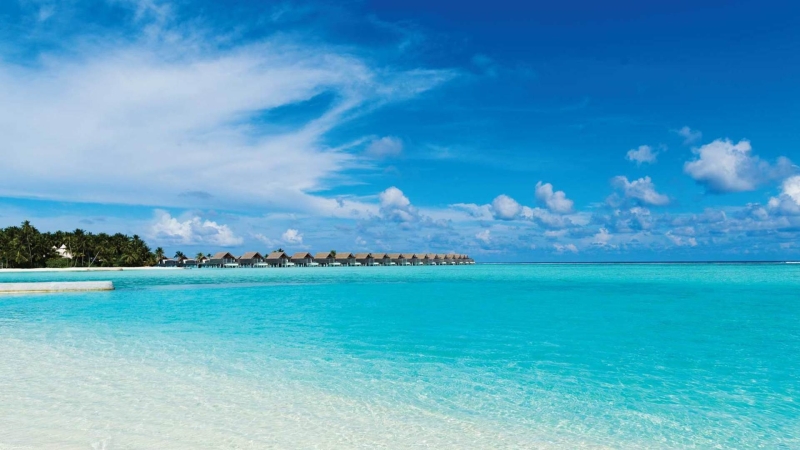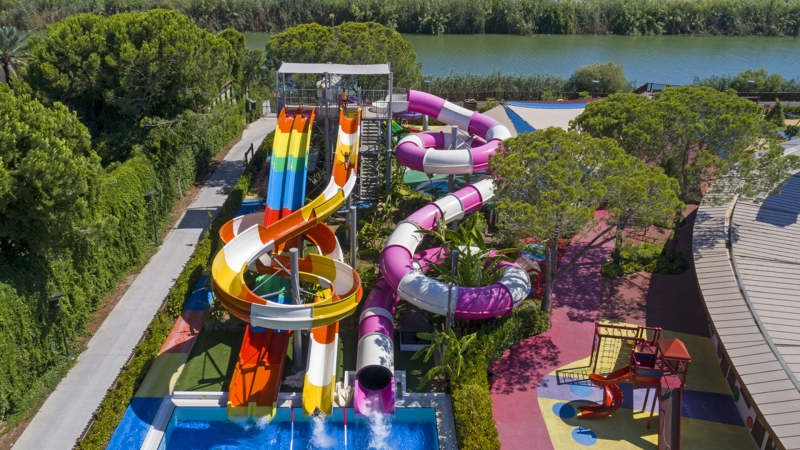
What is Turkey for Russian tourists? All-inclusive food without restrictions, the beach from morning to evening, clubs and discos from evening to morning, excursions to Pamukkale and the Lights of Anatolia show, short shopping tours to the nearest town for a leather jacket or bed linen and fridge magnets in memory of the trip.
But there is another Turkey — and now is the time to get to know it. The legendary Istanbul is a unique city spread over two continents at once, incorporating the cultural traditions of Europe and Asia, washed by the waters of two seas, the Black and Marmara, welcomes its guests with traditional oriental hospitality. Although Ankara is the capital of Turkey, Istanbul, which has been the capital of 4 empires, can rightfully be called its heart.
COVID -19 has made its own, not very pleasant adjustments to our travels, and upon arrival in Istanbul, tourists undergo a non-contact temperature measurement procedure and, if desired, take a PCR test.
In public places and on the streets, tourists and locals are required to observe security measures – to keep a social distance and wear a mask, the fine for the absence of which is quite high and amounts to 150 euros.
The nightlife of the city has also experienced the effects of COVID -19. Many bars and restaurants in Istanbul have closed their doors, or at least imposed restrictions on the number of visitors, so it will not be possible to sit in a big cheerful company in them. Even hotels that have passed safety certification follow safety precautions and occupy no more than 50-60% of their rooms.
But, as they say, there is no silver lining. This year has given travelers a unique opportunity to see Istanbul and its sights, avoiding endless queues. The famous mosques, the Grand Bazaar, the Basilica Cistern, the Galata Tower and other iconic places of Istanbul can be visited calmly, without the crowded crowds that usually filled them.
Don’t waste your time – don’t miss this chance.
What to see in Istanbul.Throughout its centuries-old history, the city has been the capital of the Roman, Byzantine, Latin and Ottoman Empires, and each period has endowed Istanbul with real architectural gems, turning it almost into an open-air museum.
1. St. Sophia.
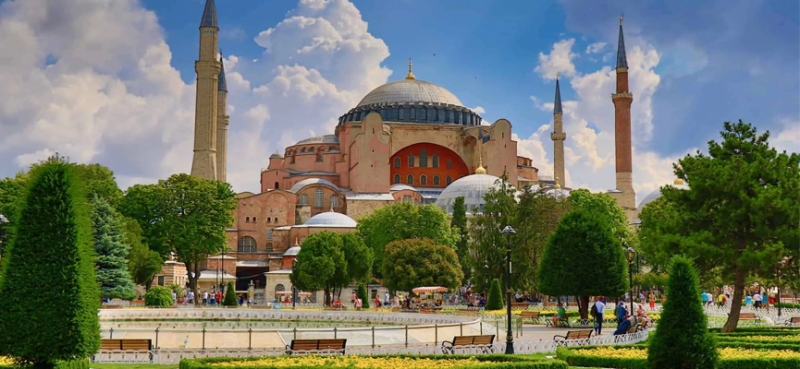
The famous Hagia Sophia, which in its nine-century history was both an Orthodox church, a mosque, and a museum, regained the status of a mosque a few months ago, in July 2020. Despite this, Hagia Sophia is open to tourists, and for free, subject to simple rules. The unique building impresses with the beauty of architecture and the splendor of the interior. Frescoes with the faces of Orthodox saints were not painted over, they are hidden during the prayers of Muslim believers with the help of a curtain system.
2. Blue Mosque
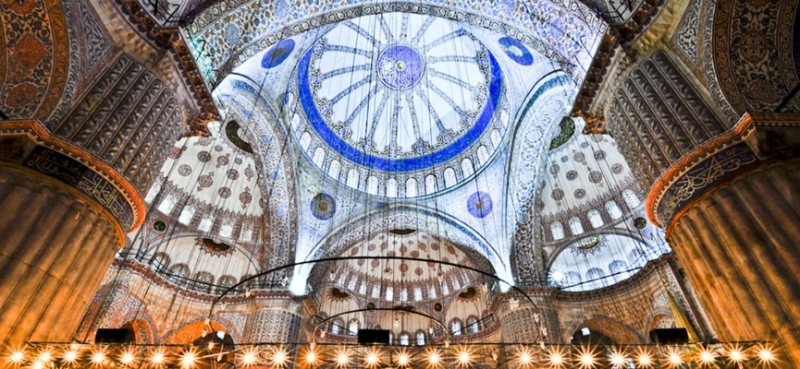
The Blue Mosque, also known as the Sultan Ahmed Mosque, is perhaps the most beautiful and majestic of the mosques built during the Ottoman Empire. In order to understand why the gray-silver building got its name, it is necessary to get inside – the interior of the mosque is lined with ceramic tiles with rich blue patterns. The Blue Mosque has 6 minarets, which was a departure from the traditions of the Muslim world – no mosque can have more minarets than the most important mosque in the Muslim world, the Reserved Mosque in Mecca, which at that time had only 5 of them. In order not to have to demolish what has already been built, 2 more minarets were added to the mosque in Mecca.Guests of Istanbul usually had to stand in a long queue to get to the mosque, so 2020 may be a great chance to do without this tedious necessity.
3. Suleymaniye Mosque.
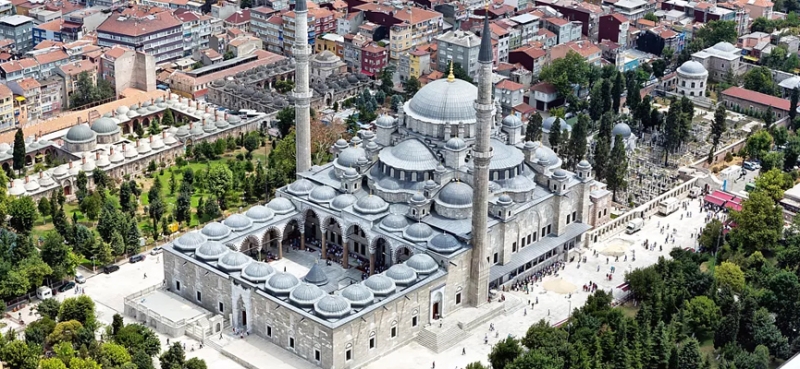
The largest mosque in Istanbul was built by order of Suleiman the Magnificent, the most famous, thanks to the TV series “Magnificent Century”, Sultan of the Ottoman Empire. This is not a detached temple, but a whole complex of buildings, not inferior in area to an entire city block, among which there are madrassas, baths, a large library, a shelter, a hospital, a kitchen and dining room, a caravanserai. The architect Sinan, who brought this architectural miracle to life, provided for the seismic activity of the region and the mosque, which he himself predicted that “It will stand forever,” survived about a hundred earthquakes, including 7-point ones, almost without damage. The luxurious decoration of the mosque is illuminated by many windows, streams of light penetrate through 136 windows located around the perimeter of the building and through 32 windows built into the dome itself.
4. Topkapi Palace
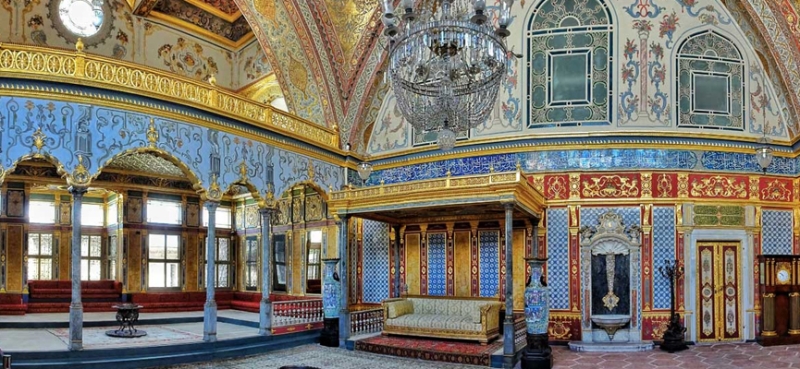
From the time of the Turkish conquest of Constantinople until the 19th century, Topkapi Palace was the residence of the Turkish sultans. The cannon gate-this is how the name of the palace translates-was so named because every time the sultan left his residence or returned to it, a cannon fired.
Initially, the palace was, so to speak, a “working office”, the harem was moved to Topkapi only under Suleiman the Magnificent, at the insistence of his wife, the famous Roksolana.
On the territory of the palace there are such sights as the Janissary Court, the Church of St. Irene – the oldestthe Orthodox Church of Constantinople, the Tower of Justice, the Beshir Agha Mosque and Hammam, the Throne Room of the Palace, the Sultan’s Chambers, the Treasury, the Tulip Garden, the Stone Tower and many others.Now Topkapi Palace is one of the largest museums in the world. The most important Muslim shrines are kept here — the sword, the cloak and the footprint of the Prophet Muhammad. About 65 thousand exhibits are available to the public. The oldest exhibit dates back to the 7th century.
5. Dolmabahce Palace
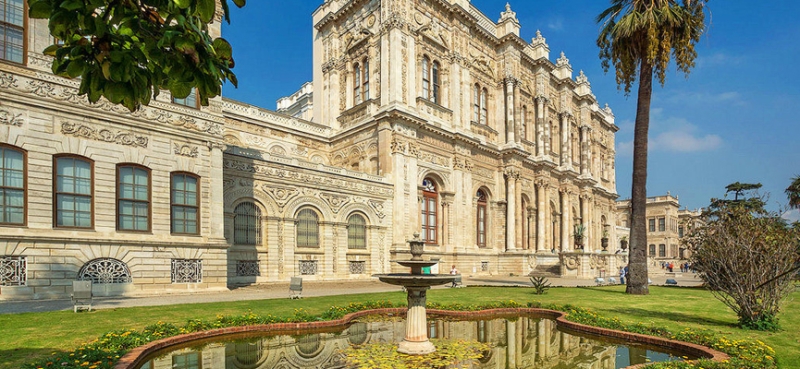
The Baroque palace replaced the medieval luxury of Topkapi, it was built in 1853 as the residence of Sultan Abdul-Majid I. It took more than 14 tons of gold to decorate the interiors, and the entire cost of construction exceeded the incredible sum of five million gold pounds. The palace is decorated with paintings by Ivan Aivazovsky, commissioned by the Sultan, and a Bohemian glass chandelier, weighing almost five tons, presented by Queen Victoria, the largest and heaviest chandelier in the world. The palace competes in beauty and elegance with the famous European palaces, such as Versailles.One of the most interesting buildings is the glass pavilion, which looks like an exquisite jewel, which offers stunning views of the local nature.
6. Yildiz Palace
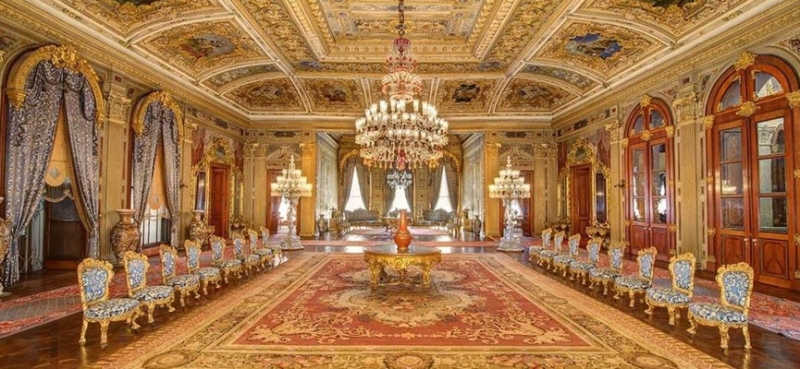
The “Star Palace” served as the residence of Sultan Abdul Hamid II, who ruled from 1876 to 1909.Formerly a sultan’s manor, the palace was rebuilt by the Italian architect Raimondo d’Aronco, a prominent representative of the Art Nouveau style. The palace is surrounded by a beautiful park full of exotic flowers and trees.
Yildiz Palace is the “youngest” palace of the Ottoman Dynasty. Under Abdul Hamid II, the building housed the chambers of Imperial officials, workshops, a theater box, and a large library.After the fall of the Ottoman dynasty, foreign heads of state and high-ranking diplomats who came to Istanbul stayed at the palace for some time. Now the palace has been completely transformed into a museum.
7. Basilica Cistern
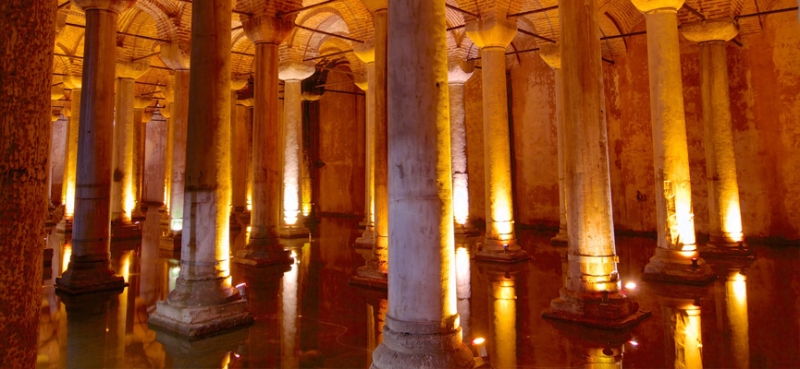
One of the most impressive architectural monuments of Istanbul, which is often filmed in films – for example, in one of the parts of the James Bond epic and in the movie “Inferno”, based on the work of the same name by Dan Brown.The cistern was built during the Byzantine era, and its arches are supported by columns taken by Christians from destroyed pagan temples, which gives the underground structure the appearance of either a mysterious crypt or a Parthenon, which, by some freak of nature, sank underground and partially flooded with dark waters.
8. Grand Bazaar
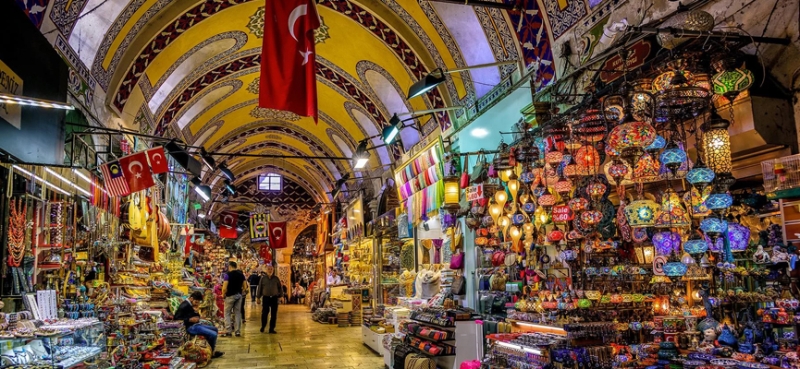
One of the largest markets in the world is the Grand Bazaar of Istanbul. But don’t be fooled by the name – it’s not worth making purchases here, as prices are very high. But you can look at local souvenirs, gold and carpets, bargain heartily, drink a cup of real Turkish coffee – in short, have a great time.The Grand Bazaar consists of 60 streets, 4,400 shops and shops, 2,000 ateliers, mosques, cafes, a school, a sauna and its own police station. The bazaar is open from 9 a.m. to 7 p.m. daily, except Sundays and religious holidays. It is a real city within a city, a tourist attraction, a museum and a temple of Turkish commerce.
9. Bosphorus Bridge
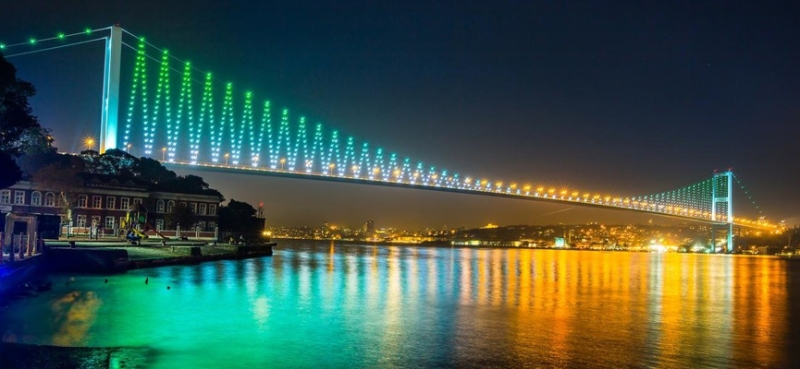
For the first time, the Persian king Darius I had to solve the issue of crossing the Bosphorus Strait. The first pontoon bridge was built to ferry his troops. Sultan Abdul Hamid II built a crossing of boats connected by ropes across the strait, and the existing suspension Bosphorus Bridge, also known as the Martyrs’ Bridge on July 15, connecting not only two parts of Istanbul, but also two continents, was commissioned in 1973. The length of this miracle of technical and engineering thought is more than one and a half kilometers, the height of the supports is 165 meters. In 1973, it became the fourth longest in the world. Only once a year, on the day of the Istanbul Marathon, the bridge becomes accessible for walking. This is due to the fact that before the ban, the bridge was very popular with suicides. It is best to admire the bridge from the side of a ship sailing along the bay. From there, the Bosphorus Bridge looks like a thin thread of lights, a weightless web that forever connected Asia and Europe.
Of course, the list of things to do in Istanbul is not limited to these attractions. To visit Istanbul — and not to walk along Divan Yolu Street, not to buy spices at the Egyptian Bazaar, not to visit the Archaeological Museum of Istanbul, pass by the Galata Tower, not to enjoy a vacation in Gulhane Park means simply not to see Istanbul.
Enjoy Oriental hospitality to the fullest, drink coffee, eat oriental sweets and the freshest seafood, bargain as if for the last time, admire with all your heart – and this city will accept you as family!
With Golden Holidays you can book accommodation in the best hotels Turkey, go on an exciting sightseeing tour.
We guarantee expert advice.
Send A REQUEST
